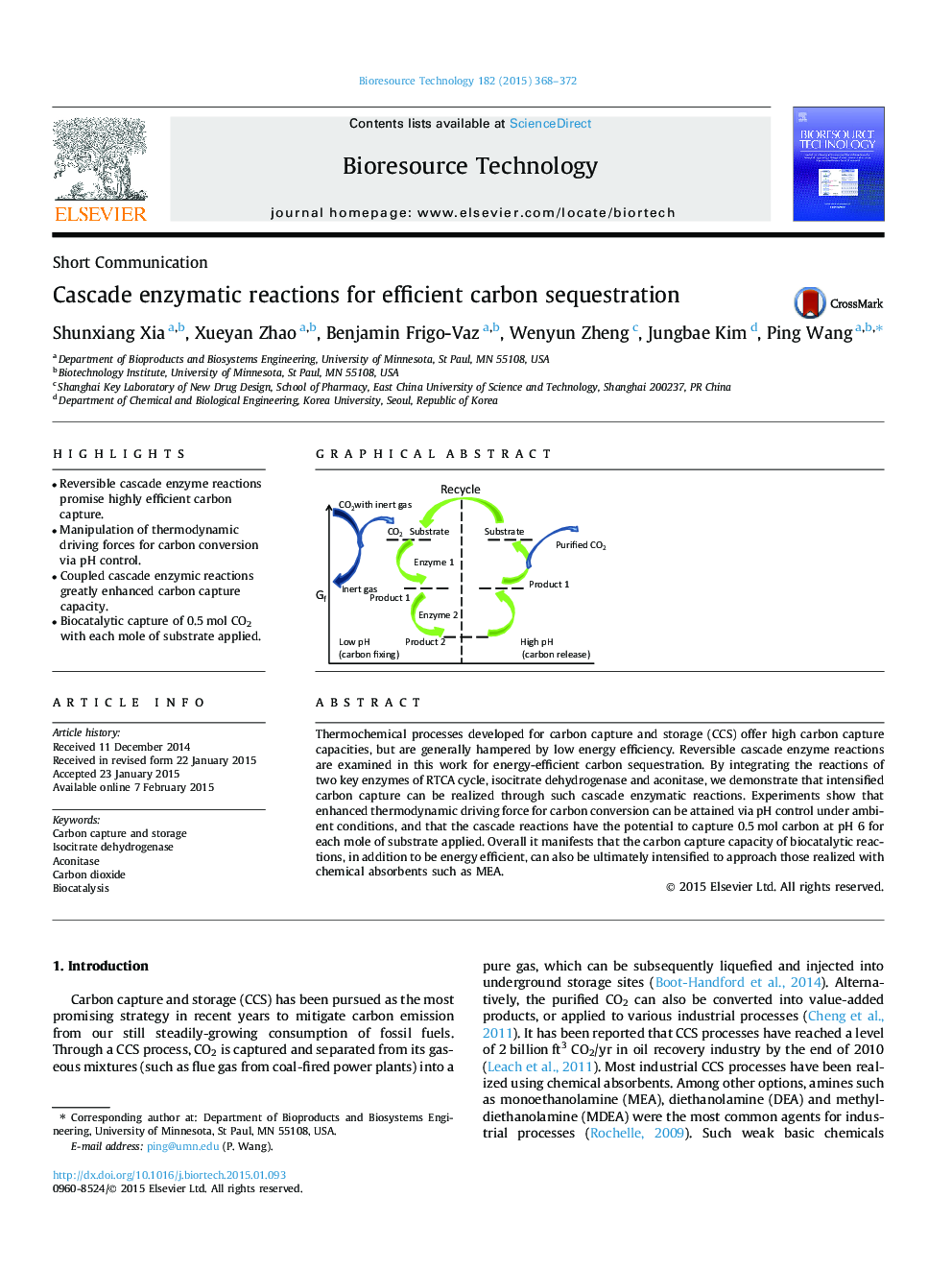| Article ID | Journal | Published Year | Pages | File Type |
|---|---|---|---|---|
| 680002 | Bioresource Technology | 2015 | 5 Pages |
•Reversible cascade enzyme reactions promise highly efficient carbon capture.•Manipulation of thermodynamic driving forces for carbon conversion via pH control.•Coupled cascade enzymic reactions greatly enhanced carbon capture capacity.•Biocatalytic capture of 0.5 mol CO2 with each mole of substrate applied.
Thermochemical processes developed for carbon capture and storage (CCS) offer high carbon capture capacities, but are generally hampered by low energy efficiency. Reversible cascade enzyme reactions are examined in this work for energy-efficient carbon sequestration. By integrating the reactions of two key enzymes of RTCA cycle, isocitrate dehydrogenase and aconitase, we demonstrate that intensified carbon capture can be realized through such cascade enzymatic reactions. Experiments show that enhanced thermodynamic driving force for carbon conversion can be attained via pH control under ambient conditions, and that the cascade reactions have the potential to capture 0.5 mol carbon at pH 6 for each mole of substrate applied. Overall it manifests that the carbon capture capacity of biocatalytic reactions, in addition to be energy efficient, can also be ultimately intensified to approach those realized with chemical absorbents such as MEA.
Graphical abstractFigure optionsDownload full-size imageDownload as PowerPoint slide
